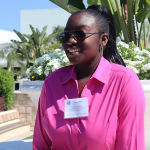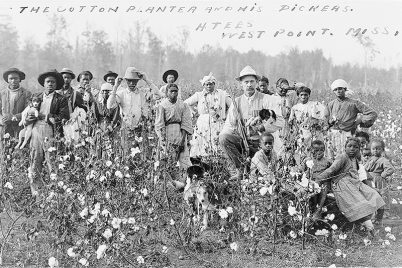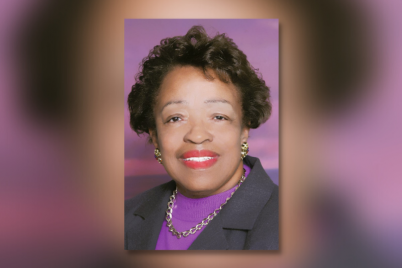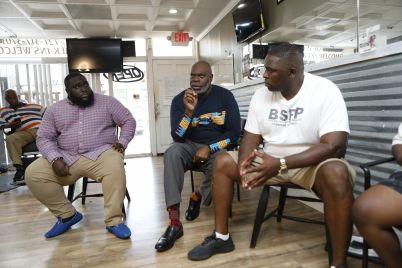Pooja Manjakandy just graduated from the IB Program at St. Petersburg High School
BY YAMIRA PATTERSON, St. Petersburg High School student
Pooja Manjakandy just graduated from the IB Program at St. Petersburg High School. The daughter of immigrants from India, she has always been one to break barriers. She was the class president, vice president of the Key Club, and president of English Honor Society.
Compassion, ambition, service and leadership are at the core of her very being. Outside of school, she is the creative director of literary arts at the student-led advocacy organization Creatively Asian. She plans to major in political science and earn a degree in constitutional law to eventually work on Capitol Hill either as a legislative aid, lobbyist, or elected official.
YAMIRA: What are some of your experiences with racism and anti-Blackness in your school or past schools? How have your experiences affected your mental health?
POOJA: I’m very fortunate enough not to have had a major incident of racism in my young school years. Perhaps this is because I live in an area of mostly BIPOC students, and my elementary and middle schools taught us to celebrate our diversity and showcase it with pride! However, when I went to St. Petersburg High School, I joined the International Baccalaureate program, a college prep magnet program, where almost 90 percent of my class is white.
While I don’t think racism is intentional, I think it has contributed to a toxic environment for perpetuating stereotypes. I am a non-Black Indian, so I’m lucky that I’ll never have to experience watching someone feel immediately threatened when I walk into a room. However, many people have told me they felt hostile toward my academic success early on. They thought that I was just “another smart Indian girl” and believed that I was going to go into medicine. This created this complex at the beginning of my high school career, where I felt I was only the worth of my GPA.
But I started gaining more life experiences and talking with other BIPOC students at St. Pete High who said they encountered the same thing, and I realized I am so much more than my GPA. I am my dreams and my aspirations. It became a challenge, a thing to overcome. It is also sometimes sad to think that for most of my life (previous and to come), I will most likely be the only person who looks like me in a room.
However, I feel like this ultimately motivated me to try new things and break barriers. That’s why I ran for homecoming court and was so happy to win the queen title because I knew how special it was to have BIPOC (and an Indian person, for that matter) hold that title!
YAMIRA: What are some examples of microaggressions that you have experienced from teachers or peers? How have these microaggressions influenced your relationships with them?
POOJA: I didn’t even realize what microaggressions were until I started researching racist language. One main microaggression that I repeatedly encountered during my early high school years was people asking me to do an Indian accent. At first, I saw it as a way to fit in and please people, but I now realize that I was degrading my own culture. I always look back at that desperation with a twinge of pain and ask myself: “How could I have been so desperate? How could I just go with it? Why didn’t I say something?”
YAMIRA: Discuss a time where you felt like your teacher(s) made an effort to be intentional with their language about racism in their class? If so, how did that make you feel?
POOJA: Whenever we talked about Indian history in school, I would always see teachers and students glance at me as to “fact-check” what they were saying even though I was learning most of this information for the first time myself.
YAMIRA: What are your thoughts on “controversial” language like the term “minorities” and “illegals?” How has this language affected your experience in your school community?
POOJA: I have never had an issue with the term minority until I recently started thinking about the meaning and impact on that word on marginalized communities. Minority makes us feel excluded and that our issues are not significant.
YAMIRA: How have your relationships with BIPOC teachers affected your experiences in the classroom?
POOJA: All my teachers are white except my Spanish teacher, who is from Spain, which is still heavily Eurocentric.
YAMIRA: In your experience, what have teachers and administrators done that has proven to be effective or harmful in approaching BIPOC students about combating racism in your school community?
POOJA: The fact that our curriculum is so Eurocentric! God forbid we learn about Middle Eastern history or read a book by a BIPOC author. It angers me that the International Baccalaureate program largely teaches Eurocentric history and authors. The only BIPOC authors we read are still from America. We really need to incorporate non-Eurocentric curricula in the curriculum.
YAMIRA: In your experience, do you feel like your perspective or experiences are welcomed and respected by your teachers? How has this affected your experiences in the classroom?
POOJA: I think my perspective is often overlooked but reasonably respected. In the United States of America, we tend to minimize and dichotomize the racial issues as “Black vs. white” when in reality, there are a plethora of races that contribute to or are affected by racial issues. For example, we talked about the effect of stereotypes and anti-Blackness in my history class, and I said that Indian Americans contribute to this problem as well as stigmatize people with dark skin as uneducated. It is everyone’s responsibility to pay attention!
YAMIRA: How would you envision anti-racist education being implemented in your school community? Are there programs that you are interested in?
POOJA: I think having dialogue is important and would definitely want to participate in those programs. I think that it’s about time the non-Black Indian community starts getting involved in major socio-political issues.
YAMIRA: What role should BIPOC students play in implementing anti-racist education in the classroom?
POOJA: BIPOC students should play a lead role, but ultimately it is up to non-BIPOC students to engage in the implementation of anti-racist education in the classroom. In the words of Dr. Martin Luther King, Jr.:
“…the Negro’s great stumbling block in the stride toward freedom is not the White Citizen’s Council-er or the Ku Klux Klanner, but the white moderate who is more devoted to “order” than to justice; who prefers a negative peace which is the absence of tension to a positive peace which is the presence of justice; who constantly says “I agree with you in the goal you seek, but I can’t agree with your methods of direct action…”
I think that this quote is so true. It needs to be a 50-50 share of the work.
YAMIRA: When was the first time you had a teacher who looked like you? What did they teach? How have they affected you?
POOJA: I have never had a teacher who looked like me. Ever.
YAMIRA: What were your thoughts and feelings during the start of the Black Lives Matter protests following George Floyd’s murder?
POOJA: I was as angry at his murder as most Americans. I felt inspired watching Black Lives Matter protesters from all walks of life march to stand up against injustice. I remember sitting my family down and having an honest conversation about the impact of our perpetuation of stereotypes and how our community is excluded from the problem when in reality we are the very catalysts. I told my dad straight up, “what about this seems fair?” How dare we not speak up because none of this is okay.

Yamira Patterson
YAMIRA: What advice, if any, do you have for teachers who want to be better allies for BIPOC students?
POOJA: My advice is conversation. Stop tiptoeing around inequality and “tense topics.” Let discourse happen to ensure no one lives in an echo chamber.









